A travelling exhibition that aims to locate the position of humankind vis a vis water, soil, plant, rocks and weather has come to Kolkata. The exposition conceptualised by Bruno Latour, professor of sciences, and Peter Weibel, artist and curator, is on display at Indian Museum till April 2.
Critical Zones: In Search of a Common Ground travels to Kolkata is a joint initiative of Goethe Institut / Max Mueller Bhavan and Indian Museum. The unique exhibition blends science and philosophy and presents the concepts with the use of art.
Inauguration
The inaugural session was attended by Arijit Dutta Chowdhury, director, Indian Museum; Sayan Bhattacharya, education officer, Indian Museum; Manfred Auster, German consul general, Kolkata; Astrid Wege, director, Goethe Institut / Max Mueller Bhavan Kolkata; co-curators Lena Reitschuster and Mira Hirtz.
‘’Indian Museum is a fabulous place for exhibitions. We are living in critical times… I guess we are going to learn about that in the exhibition. Critical times… there is war going on, the climate crisis is critical to us as well; all of humanity and for non-human life forms. I think that is an important message, that this is not just about humanity, it is also about all life forms as we see,” Auster said.
Walk Through
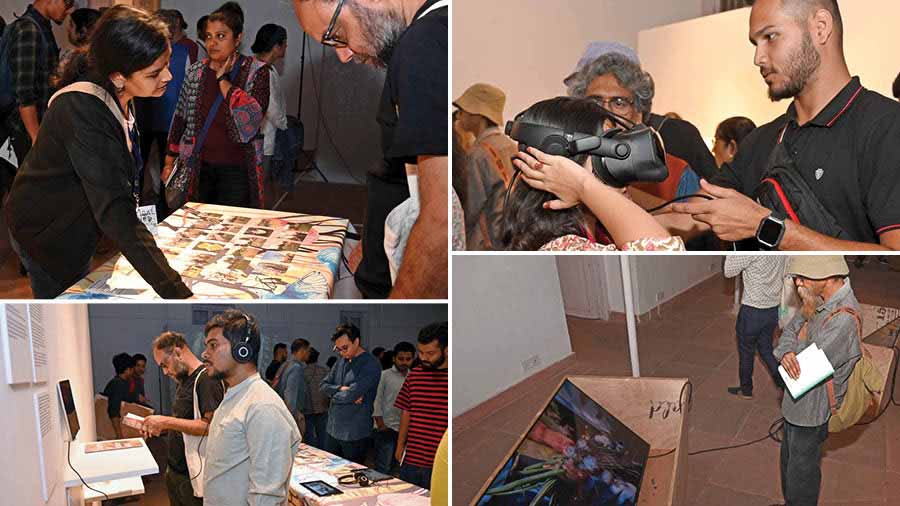
The exhibition is installed with the help of maps, photographs, videos, short films, and sculptures on different themes which visitors can engage with
Co-curator of the exhibition Mira Hirtz embarked upon a walk-through of the exhibition. What is interesting is that there are no accompanying texts to the displays. Audiences are requested to pick up a field book upon entering the exhibition to help them navigate through the space. The exhibition is installed with the help of maps, photographs, videos, short films, and sculptures on different themes by various artists. Visitors can engage in interactions with the displays through virtual reality videos, audio-visual data and even get their queries clarified by talking to the exhibition volunteers.
Map

Starting to Observe: A Critical Zone Observatory, the first section of the exhibition, comprises maps and video animation
The first section, titled Starting to Observe: A Critical Zone Observatory, comprises maps and video animation that explains the maps in greater detail. “This work [map] is in the beginning to understand what this exhibition tries to do. We are looking at a map that is strange to us because it’s round and, upon closer inspection, you will see that the atmosphere is in the middle and the soil and the rocks are on the outside. If you try to imagine the Earth inside out as a globe then the universe will be in the middle. This is what happened with this map,” Hirtz said.
Borders
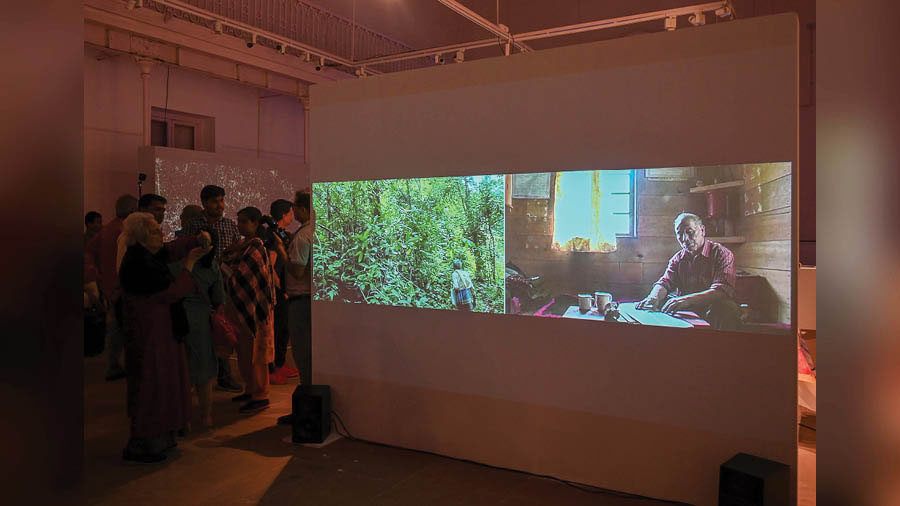
The second section of the exhibition includes short films and videos for a better understanding of how products consumed by humanity go beyond borders
The theme for the second section is We don’t live where we are – Ghost Acreages. This section is all about trying to understand the borders of the areas that allow humanity to prosper. “The second scene looks at something that the curators of the original exhibition called ghost acreages. It talks about how we believe that the border of a country is according to the nation but if you would like what this country means in order to exist then the border would be quite different. It comes from the idea that usually we do not only live by using the products that are being made within the country but we have a lot of exchanges going on,’’ Hirtz said. This is supplemented by short films and videos for a better understanding of how products consumed by humanity go beyond borders.
Forensic Architecture
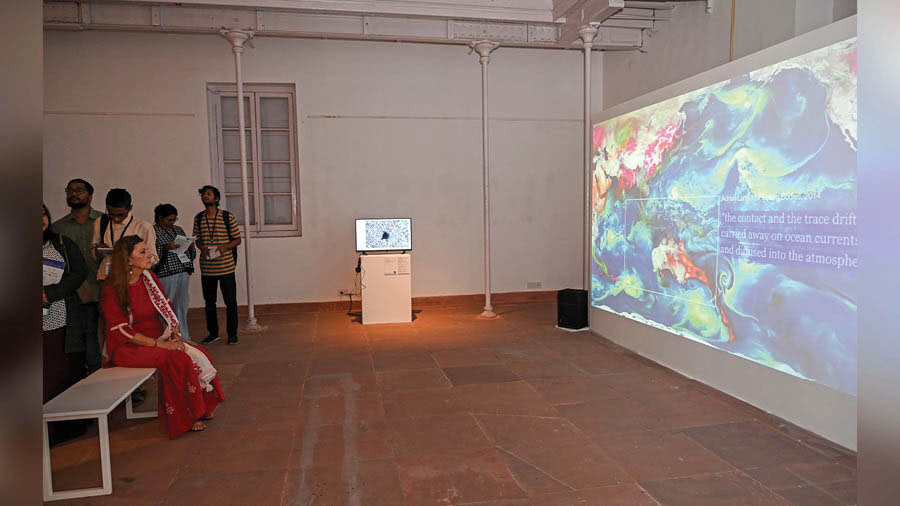
Video mapping done by forensic architects on display at the exhibition
"The video mapping behind me is done by forensic architecture. Forensic architects are artists and architects, scientists, lawyers, people coming together from different disciplines and working together. They don’t practise architecture in its traditional sense. What they do is they use tools of model making of architecture in order to investigate situations in which human rights have been violated,’’ Hirtz said about the video installation.
GAIA Theory
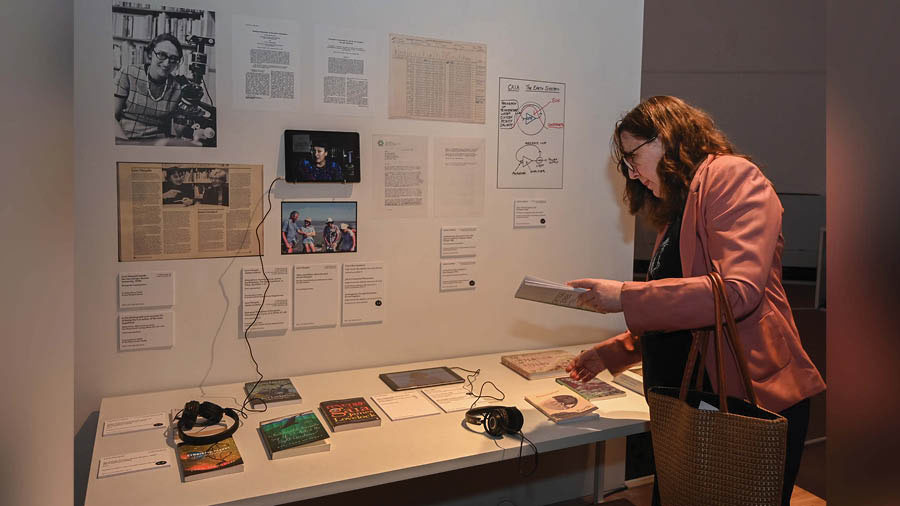
Books and reports exploring GAIA theory at the exhibition
The third section titled We live inside GAIA is based on the principles formulated by scientists James Lovelock and Lynn Margulis that talk about how important it is to understand the life forms and their behaviour in order to understand the changes in the physical world. “This is zooming in and focusing on microbial lives like fungi and bacteria and how these microbial lives are needed for the symbiotic relationships. The GAIA theory was very innovative and said that organisms are changed by the physical world and vice versa,’’ Hirtz said.
Local collaboration
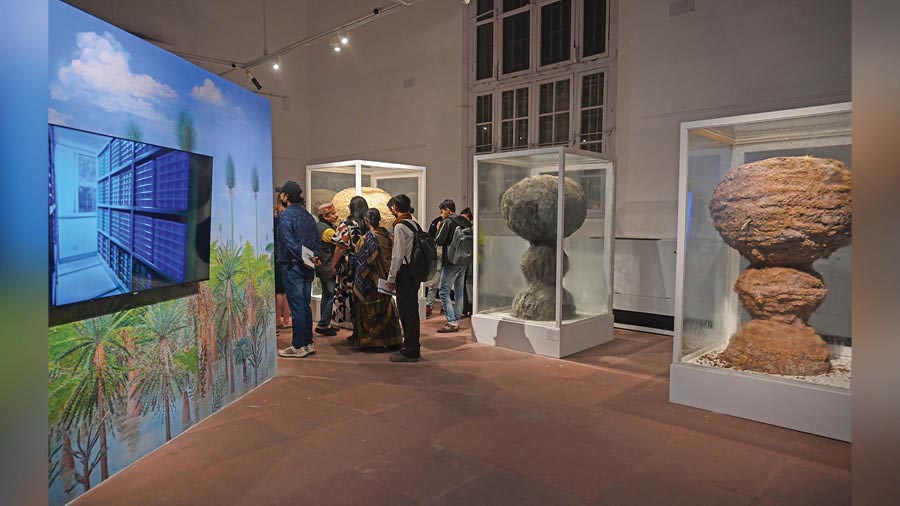
Sculptures on display
An interesting aspect of the travelling exhibition is that it collaborates with local artists and presents their perspectives, too. One such artist is Maksud Ali Mondal who presented three sculptures to discuss the relationship between the living and the physical world. ‘’The sculptures are made of sugar, soil and other organic materials like food waste and straw, sugarcane and fruit pulp. The structures symbolise a mushroom cloud. The smoke formation after the Hiroshima-Nagasaki bomb blast was that of a mushroom cloud. I am inspired by that form and adapted to my sculpture. It took me two weeks to make this,’’ Ali said.
Know your exhibition
What: Critical Zones: In Search of a Common Ground
Where: Indian Museum, Kolkata
When: On till April 4, 10.30am-5pm, except Mondays and public holidays
